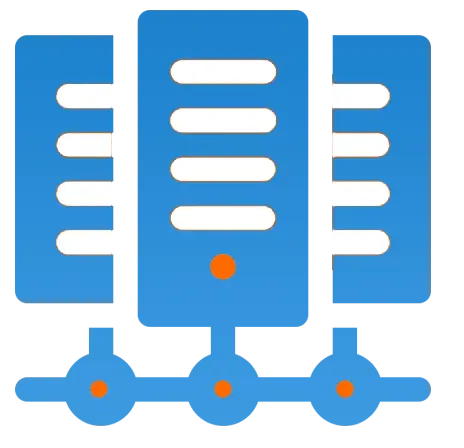Get 69% Off on Cloud Hosting : Claim Your Offer Now!
- Products
-
Compute
Compute
- Predefined TemplatesChoose from a library of predefined templates to deploy virtual machines!
- Custom TemplatesUse Cyfuture Cloud custom templates to create new VMs in a cloud computing environment
- Spot Machines/ Machines on Flex ModelAffordable compute instances suitable for batch jobs and fault-tolerant workloads.
- Shielded ComputingProtect enterprise workloads from threats like remote attacks, privilege escalation, and malicious insiders with Shielded Computing
- GPU CloudGet access to graphics processing units (GPUs) through a Cyfuture cloud infrastructure
- vAppsHost applications and services, or create a test or development environment with Cyfuture Cloud vApps, powered by VMware
- Serverless ComputingNo need to worry about provisioning or managing servers, switch to Serverless Computing with Cyfuture Cloud
- HPCHigh-Performance Computing
- BaremetalBare metal refers to a type of cloud computing service that provides access to dedicated physical servers, rather than virtualized servers.
-
Storage
Storage
- Standard StorageGet access to low-latency access to data and a high level of reliability with Cyfuture Cloud standard storage service
- Nearline StorageStore data at a lower cost without compromising on the level of availability with Nearline
- Coldline StorageStore infrequently used data at low cost with Cyfuture Cloud coldline storage
- Archival StorageStore data in a long-term, durable manner with Cyfuture Cloud archival storage service
-
Database
Database
- MS SQLStore and manage a wide range of applications with Cyfuture Cloud MS SQL
- MariaDBStore and manage data with the cloud with enhanced speed and reliability
- MongoDBNow, store and manage large amounts of data in the cloud with Cyfuture Cloud MongoDB
- Redis CacheStore and retrieve large amounts of data quickly with Cyfuture Cloud Redis Cache
-
Automation
Automation
-
Containers
Containers
- KubernetesNow deploy and manage your applications more efficiently and effectively with the Cyfuture Cloud Kubernetes service
- MicroservicesDesign a cloud application that is multilingual, easily scalable, easy to maintain and deploy, highly available, and minimizes failures using Cyfuture Cloud microservices
-
Operations
Operations
- Real-time Monitoring & Logging ServicesMonitor & track the performance of your applications with real-time monitoring & logging services offered by Cyfuture Cloud
- Infra-maintenance & OptimizationEnsure that your organization is functioning properly with Cyfuture Cloud
- Application Performance ServiceOptimize the performance of your applications over cloud with us
- Database Performance ServiceOptimize the performance of databases over the cloud with us
- Security Managed ServiceProtect your systems and data from security threats with us!
- Back-up As a ServiceStore and manage backups of data in the cloud with Cyfuture Cloud Backup as a Service
- Data Back-up & RestoreStore and manage backups of your data in the cloud with us
- Remote Back-upStore and manage backups in the cloud with remote backup service with Cyfuture Cloud
- Disaster RecoveryStore copies of your data and applications in the cloud and use them to recover in the event of a disaster with the disaster recovery service offered by us
-
Networking
Networking
- Load BalancerEnsure that applications deployed across cloud environments are available, secure, and responsive with an easy, modern approach to load balancing
- Virtual Data CenterNo need to build and maintain a physical data center. It’s time for the virtual data center
- Private LinkPrivate Link is a service offered by Cyfuture Cloud that enables businesses to securely connect their on-premises network to Cyfuture Cloud's network over a private network connection
- Private CircuitGain a high level of security and privacy with private circuits
- VPN GatewaySecurely connect your on-premises network to our network over the internet with VPN Gateway
- CDNGet high availability and performance by distributing the service spatially relative to end users with CDN
-
Media
-
Analytics
Analytics
-
Security
Security
-
Network Firewall
- DNATTranslate destination IP address when connecting from public IP address to a private IP address with DNAT
- SNATWith SNAT, allow traffic from a private network to go to the internet
- WAFProtect your applications from any malicious activity with Cyfuture Cloud WAF service
- DDoSSave your organization from DoSS attacks with Cyfuture Cloud
- IPS/ IDSMonitor and prevent your cloud-based network & infrastructure with IPS/ IDS service by Cyfuture Cloud
- Anti-Virus & Anti-MalwareProtect your cloud-based network & infrastructure with antivirus and antimalware services by Cyfuture Cloud
- Threat EmulationTest the effectiveness of cloud security system with Cyfuture Cloud threat emulation service
- SIEM & SOARMonitor and respond to security threats with SIEM & SOAR services offered by Cyfuture Cloud
- Multi-Factor AuthenticationNow provide an additional layer of security to prevent unauthorized users from accessing your cloud account, even when the password has been stolen!
- SSLSecure data transmission over web browsers with SSL service offered by Cyfuture Cloud
- Threat Detection/ Zero DayThreat detection and zero-day protection are security features that are offered by Cyfuture Cloud as a part of its security offerings
- Vulnerability AssesmentIdentify and analyze vulnerabilities and weaknesses with the Vulnerability Assessment service offered by Cyfuture Cloud
- Penetration TestingIdentify and analyze vulnerabilities and weaknesses with the Penetration Testing service offered by Cyfuture Cloud
- Cloud Key ManagementSecure storage, management, and use of cryptographic keys within a cloud environment with Cloud Key Management
- Cloud Security Posture Management serviceWith Cyfuture Cloud, you get continuous cloud security improvements and adaptations to reduce the chances of successful attacks
- Managed HSMProtect sensitive data and meet regulatory requirements for secure data storage and processing.
- Zero TrustEnsure complete security of network connections and devices over the cloud with Zero Trust Service
- IdentityManage and control access to their network resources and applications for your business with Identity service by Cyfuture Cloud
-
-
Compute
- Solutions
-
Solutions
Solutions
-
 Cloud
Hosting
Cloud
Hosting
-
 VPS
Hosting
VPS
Hosting
-
GPU Cloud
-
 Dedicated
Server
Dedicated
Server
-
 Server
Colocation
Server
Colocation
-
 Backup as a Service
Backup as a Service
-
 CDN
Network
CDN
Network
-
 Window
Cloud Hosting
Window
Cloud Hosting
-
 Linux
Cloud Hosting
Linux
Cloud Hosting
-
Managed Cloud Service
-
Storage as a Service
-
 VMware
Public Cloud
VMware
Public Cloud
-
 Multi-Cloud
Hosting
Multi-Cloud
Hosting
-
 Cloud
Server Hosting
Cloud
Server Hosting
-
 Bare
Metal Server
Bare
Metal Server
-
 Virtual
Machine
Virtual
Machine
-
 Magento
Hosting
Magento
Hosting
-
Remote Backup
-
 DevOps
DevOps
-
 Kubernetes
Kubernetes
-
 Cloud
Storage
Cloud
Storage
-
NVMe Hosting
-
 DR
as s Service
DR
as s Service
-
-
Solutions
- Marketplace
- Pricing
- Resources
- Resources
-
By Product
Use Cases
-
By Industry
- Company
-
Company
Company
-
Company
Why is MariaDB becoming the go-to-choice for businesses?
Table of Contents
Ideally, the open source database landscape moves swiftly and MariaDB is the best example of that.
MariaDB Hosting is a popular relational database management system (RDBMS) that is forked from MySQL. In 2009, MariaDB became one of the top open source databases available.
Though it has many more striking resemblances to MySQL. MariaDB Cloud is a much better right database for businesses. MariaDB is designed for high performance and processing data faster than ever before.The performance of MariaDB cloud hosting is much better than MySQL especially with a large number of data records.
Also, MySQL cannot support large thread pools at once due to a smaller Cloud storage capacity, but this is possible under MariaDB.
In this blog, we give an overview of what MariaDB cloud hosting, it works, its unique benefits and features, and answer one of the common questions that MariaDB became a popular choice for businesses.
MariaDB Introduction
What is MariaDB?
MariaDB cloud hosting is a fork of MySQL, but it is like an upscaled one, it is more scalable, robust, and fast. Actually, it is an improved, drop-in replacement of MySQL.
Substituting the standard MySQL server with the MariaDB server analog means that you can take complete benefit of the enhancements in MariaDB without any requirement to modify your application code.
In more concise terms, MariaDB cloud is a powerful and compatible drop-in replacement for MySQL. It is also free and open-source, meaning that it can be used and customized without paying anything. This makes MariaDB an ideal choice for those who need an advanced RDBMS that meets their specific requirements.
MariaDB is a RDBMS that is based on the Structured Query Language (SQL). It supports ACID-style data processing, which guarantees atomicity, consistency, isolation and durability for transactions.
In addition, the database also supports JSON APIs, parallel data replication and multiple storage engines, including InnoDB, MyRocks, Spider, Aria, TokuDB, Cassandra and MariaDB ColumnStore.
MariaDB is a widely used, open source database management system that provides an SQL interface for accessing data. The latest versions of MariaDB also include GIS and JSON features. MySQL and MariaDB have long been key components of almost all PHP applications, such as Magento, WordPress, etc.
MariaDB turns data into structured information that can be used in a number of different applications. Because it is so fast and reliable, it is a popular choice for accessing and managing content. It also has a rich ecosystem of plugins, storage engines, and other utilities that make it useful for a wide variety of use cases.
However, now MariaDB is becoming the world’s choice for a number of reasons, as explained below.
How Does MariaDB Work?
As a relational database, MariaDB manages forejudged relationships between data items. Those data items are organized into tables, columns, and rows.. Each row in a table may contain a primary key and rows among multiple tables can be created using foreign keys.
Relational databases are simple, very powerful and offer many features that other types of databases don’t, making them perfect for managing large amounts of data. Due to which it is widely adapted by organizations of all shapes and sizes.
The relational model used in databases ensures that data tables, views, and indexes are separate from the physical storage of the database. For database administrators, this means that they can manage physical data without affecting access to that data as a logical structure. For example, you can rename a database file without renaming the tables stored within it.
When we mention physical and logical operations, we are referring to database operations. Logical operations permit applications to specify the required content, and physical operations, like how the data should be accessed and how it should be used for specific tasks.
How is MariaDB different from MySQL?
Some of the key features of MariaDB and MySQL:
|
Features |
MariaDB |
MySQL |
|---|---|---|
|
Performance |
Performance Enhanced performance through more efficient indexing and multi-threading |
Good performance, but not as efficient as MariaDB |
|
Scalability |
Improved scalability for handling large amounts of data and high levels of concurrency |
Scalable, but not as robust as MariaDB |
|
Storage Engines |
More storage engines such as Aria, XtraDB, and RocksDB |
InnoDB and MyISAM engines |
|
Security |
Security More robust security features such as improved encryption and password validation, and the ability to use external authentication methods |
Good security features, but not as advanced as MariaDB |
|
Open-Source |
Open-source and actively developed by the community |
Open-source, but not as actively developed by the community as MariaDB |
|
Compatibility |
Fully compatible with MySQL |
MySQL is the origin of MariaDB, it’s fully compatible |
|
Advanced features |
More advanced features such as Window functions, Common Table Expressions and some others |
Some advanced features |
|
Community & Support |
Large and active community, a lot of support from developers and companies |
Large community, but not as active as MariaDB |
|
Cost-effective |
Cost-effective solution for businesses and organizations |
Cost-effective solution for businesses and organizations |
How MariaDB became a popular choice for businesses?
MariaDB is becoming increasingly popular with businesses for a number of reasons, the most prominent being that it is a fork of MySQL.
As MySQL is a widely used and well-established database management system, this means that MariaDB comes with a similar feature set and is compatible with many existing MySQL installations.
Thus, businesses can switch to MariaDB without having to completely overhaul their existing infrastructure or change their applications or setup – making the transition as smooth as possible.
MariaDB is a high-performance database that offers several advantages over MySQL, including improved performance, security, and scalability.
MariaDB’s high-performance storage engines, such as XtraDB, ColumnStore, and Spider, are designed to handle large datasets and high-concurrency workloads.
Additionally, MariaDB has advanced security features such as encryption and role-based access control, which make it a more secure option for businesses.
MariaDB Aria vs InnoDB: A Comparative Analysis
MariaDB offers two prominent storage engines, Aria and InnoDB, each with distinct characteristics. Aria, known for its crash-safe mechanism and optimized performance, is suitable for scenarios prioritizing efficiency and swift recovery in case of system failures.
In contrast, InnoDB stands out for its full ACID compliance and scalability, making it an ideal choice for high-concurrency environments requiring robustness and transactional support. Scroll down to check comparison between MariaDB Aria vs InnoDB
| Aspect | MariaDB Aria | InnoDB |
| Storage Mechanism | Crash-safe, optimized for performance | Fully ACID compliant, optimized for scalability |
| Locking Mechanism | Table-level locking | Row-level locking |
| Crash Recovery | Faster due to simpler architecture | Slower due to transaction log replay |
| Storage Efficiency | More lightweight, suitable for environments prioritizing storage efficiency | Consumes more storage due to additional features like MVCC and clustered indexes |
| Replication & Clustering | Can be used but may lack robustness and performance compared to InnoDB | Preferred choice for replication and clustering due to robustness and support for features like foreign keys and transactions |
| Use Cases | Well-suited for crash recovery speed and storage efficiency-focused applications | Recommended for applications requiring full ACID compliance, high concurrency, and scalability |
Final Thoughts
Hence, MariaDB is an increasingly popular choice for businesses because it’s compatible with MySQL, has better performance and security, and is open-source software that can be customized to a business’s specific needs.
Thus, organizations that want an RDBMS database that is open source and likely to remain that way, should consider Cyfuture cloud MariaDB solution.
However, the decision of which database to use is unique to every organization and should be based on what will best meet the organization’s goals.
Once the decision is made, it is important to put effort into keeping the database optimized, secure and supported.
Recent Post

Stay Ahead of the Curve.
Join the Cloud Movement, today!
© Cyfuture, All rights reserved.
Send this to a friend

 Pricing
Calculator
Pricing
Calculator
 Power
Power
 Utilities
Utilities VMware
Private Cloud
VMware
Private Cloud VMware
on AWS
VMware
on AWS VMware
on Azure
VMware
on Azure Service
Level Agreement
Service
Level Agreement 


















